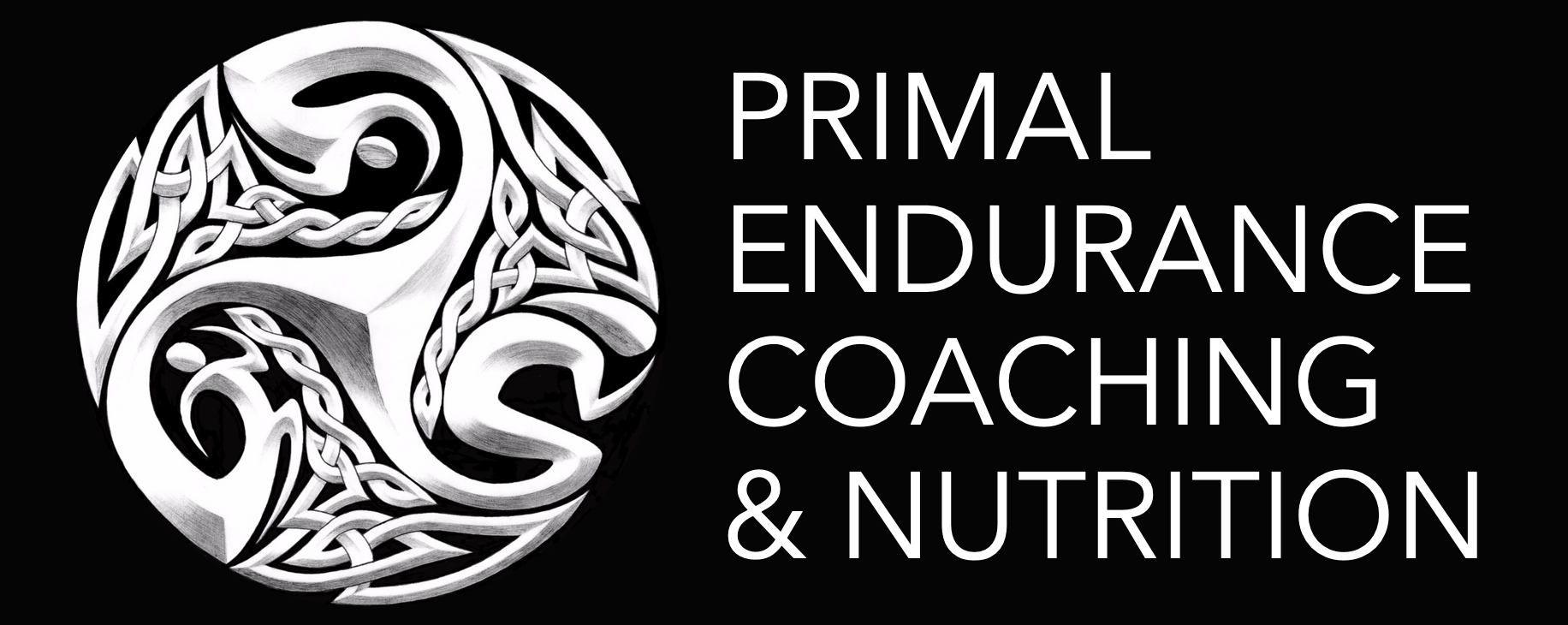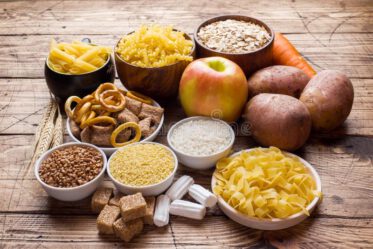When we think of carbs we usually think of bread, pasta and rice. But carbs are basically anything containing sugar. They are an important source of energy for maintaining blood glucose levels, brain function and muscle contraction. They play a large role in endurance performance, high (intermittent) intensity exercise and glycogen replenishment. The ease with which the body uses carbs depends on their form. Simple carbs are easily digested and include sugars like glucose, fructose, maltose and sucrose (table sugar). Complex carbs take longer to break down and exist as starch (potato, pasta, rice), maltodextrin (food additive), glycogen and fiber.
What happens when we eat Carbs?
Carbohydrates play a number of important roles in the body but their main function is to provide energy to working muscles. Mainly stored as glycogen in the muscles and the liver, muscles accommodate roughly 400 g of glycogen (1g glycogen = 4 kcal) and the liver 80-100 g. The greater the muscle mass, the more glycogen you can store. Muscle glycogen is a very important fuel source for muscle contraction during high intensity exercise. However, the higher the intensity the more rapidly it is depleted.
The function of liver glycogen is to regulate blood glucose levels. Glucose is released to the circulatory system and supplied to the brain. In contrast to this, muscle glycogen is converted to glucose in the muscles but is not released to the blood circulation. Instead it is only used within the muscle.
What happens when we exercise?
As mentioned above, the average lean body will store approximately 500 g of glycogen in the liver and muscles, which equates to 2000 kcal. If unreplenished during exercise, and depending on the intensity and duration, it will become depleted. A decrease in liver glycogen will cause a drop in blood sugar resulting in hypoglycaemia. Early symptoms of this are dizziness, weakness, focus and shivers. Extreme hypoglycaemia can lead to unconsciousness and even brain damage. However, blood sugar can be quickly replenished by consuming a sugary drink.
On the other hand, muscle glycogen depletion during prolonged or intense exercise will result in the muscle’s inability to contract. Referred to as “hitting the wall” or “the man with the hammer“, this can put an end to your race day or training. In this situation you will only be able to function again after ingesting sufficient carbs (and this could cost you 20 min). It is also the reason why so many recreational marathon runners say they “hit the wall” at around the 32 – 36 km mark. After three plus hours without a refuelling strategy, with an average calorie burn of 800 kcal/hour, they simply run out of fuel.
Excess weight from Carbs
We all recognise the fact that carbs add weight. But why is this? Simply put…..we eat too much. When muscles don’t perform work, they don’t require excessive refuelling. At least not to the extent people think. Yet we as humans are constantly stuffing ourselves with processed and refined foods, soft drinks/juices and sweets. Most of these contain fructose (corn syrup). And while the natural sources are not as bad (fruit, etc.) the processed versions are.
Once liver and muscle glycogen stores are full, the excess carbohydrates are converted to fat. Balancing your carbohydrate intake in line with your caloric expenditure (energy use) can prevent this. At the end of the day it is basic maths. Eat more than you burn and you gain weight. Eat less than you burn and you lose weight. Eat the same as you burn and you have a steady weight.
Additionally, glycogen will retain water. For every gram of glycogen, the body retains approx. 3 g of water. This is good for the body’s hydration levels but not if you need to make weight for a boxing match. That is why athletes who need to make weight will basically cut out all carbohydrates (and use a sauna) prior to a weigh-in. Reduced carbs means less glycogen and three times less water weight. It is also the reason why fad “Carb-free” diets are so effective. Cut out carbs for a week, lose all the extra water weight, feel great and start back on your normal diet. And people wonder why they gain all the weight back in a week!!!
So what are the recommendations for carbohydrate intake?
Carbohydrate intake is very specific to the individual and depends on the lifestyle, job and activities of the individual. Somebody who walks for an hour a day would require substantially less carbohydrate intake than a cyclist in the Tour de France who could burn between 6000 – 12000 kcal/day depending on the stage. Carbohydrate intake is personal to each individual. As a sports nutritionist it is important to understand the athlete’s needs and goals. Are they looking to recover, perform or adapt?
The International Olympic Committee consensus on sport nutrition recommend the following carbohydrate intake:
- Immediately post-exercise (0 – 4 h): 1.0 – 1.2 g/kg/h ingested frequently over the 4 h period
- Low-intensity exercise/manual labour: 3 – 5 g/kg/day
- Moderate exercise program (1h/day): 5 – 7 g/kg/day
- Endurance; mod – high intensity (1 – 3 h/day): 6 -10 g/kg/day
- Endurance; mod – high intensity (4 – 5 h/day): 10 – 12 g/kg/day
Additionally,
- use nutrient rich sources of carbohydrate for glycogen repletion. If you cannot get at least 1 g/kg/h post-exercise then adding 0.4 g/kg/h of protein will also help support glycogen recovery. Above 1.2 g carbohydrate/kg/h, protein has no added benefit in glycogen repletion. NOTE: this is different to post-exercise muscle protein synthesis.
- Exercise can suppress appetite preventing intake of solid food. The use of a sports drink (containing glucose or glucose/fructose mix) can help replenish carbohydrate as well as providing hydration.
- with multiple trainings/races in a day with <8 h recovery, refuelling after the initial training is paramount. With longer recovery periods, carbohydrate ingestion can be more spread out and can be from either solid or fluid sources.
- Glycogen re-synthesis will be more rapid when using foods with a higher GI-index
- Lower intensity training burns more fat. Therefore a slow run at conversational pace (HR zone 2) will not require as much glycogen replenishment.
- high-intensity training should be accompanied by the relevant carbohydrate intake. If you spend 1 h doing high intensity exercise and burn 800 kcal then you should aim to replace this with 200g carbohydrate to maintain energy balance. More than this and you add weight, less than this and you lose weight but also will not recover properly.
Check here for more information about basic nutrition, lifestyle and nutrition to fuel performance.


Good one, thanks for the summary!!!